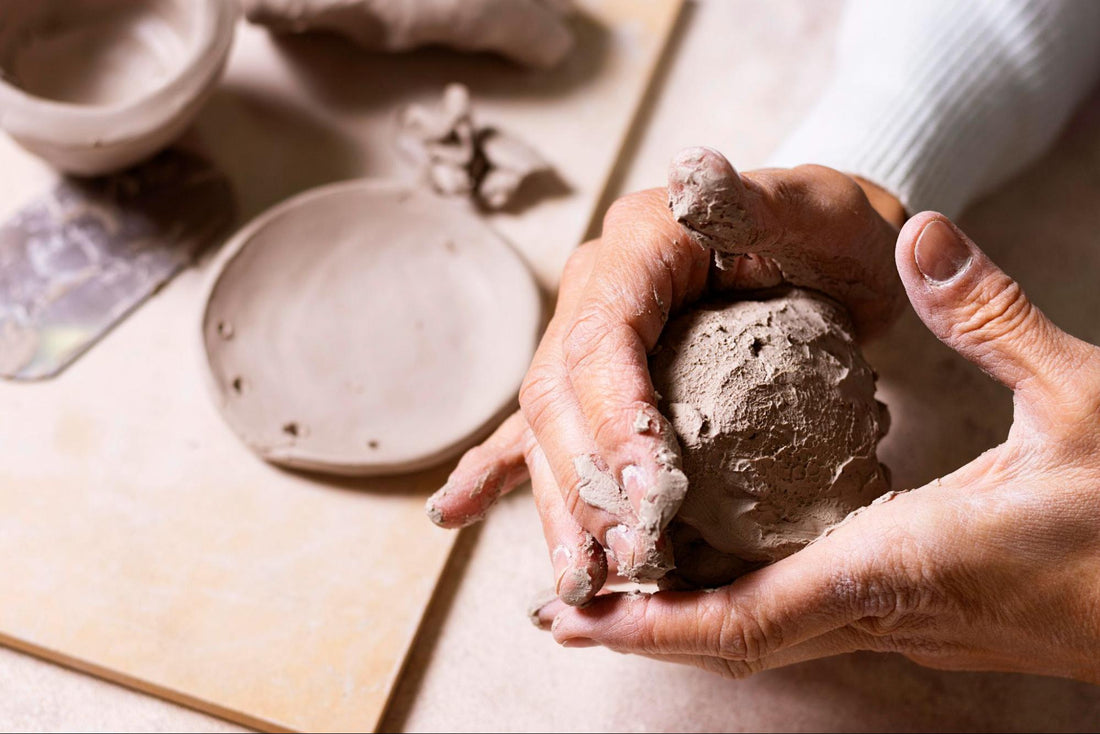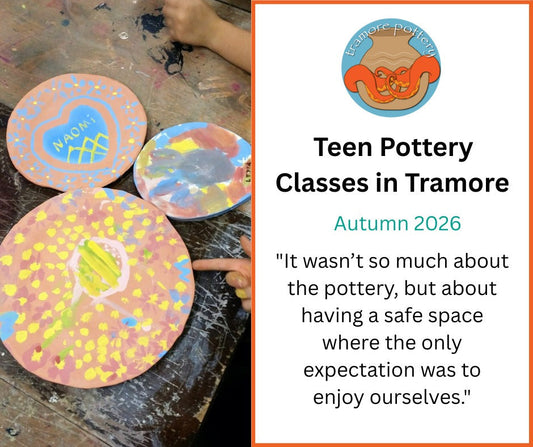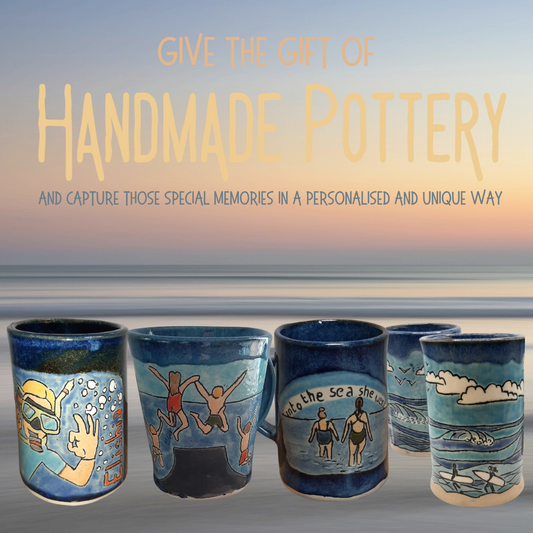3 Tips for Getting Started with Making Pottery and Ceramics

I have been making pottery for the past five or six years and selling at local markets and craft fairs for the past two. It’s a great way to meet people who are interested in your craft and love to hear about the making process. One of the most common questions I get asked is, “I’d love to try it. Do you do pottery classes?”.
At the moment, my answer is, “I’m afraid not, but I can give you the name of a great teacher!” Because one of the best ways to get started with pottery is to take a class. By taking pottery classes, you are getting the help and guidance of an expert. But you may want to try it out first yourself at home.
My Top Tips on How to Make Pottery at Home
- All you need is clay
There are three main types of pottery clay – porcelain, stoneware and earthenware. These clays are all fired at different temperatures, resulting in a difference in water resistance and durability of the finished product.
- Earthenware is fired to a temperature of 1050oC and is porous if unglazed.
- Stoneware is fired to a temperature of 12000C and is more durable than earthenware.
- And porcelain is also fired to 12000C, but its white clay develops a delicate translucence.
For the clay to be transformed into ceramics, these clays all need to go through a bisque firing in a kiln. Starting out, you may not have access to a kiln. So, a good clay to begin with is air-drying clay. This is a cheap craft clay that does not need to be fired. Once it is fully dry, it can be painted and sealed with a varnish. Bear in mind, though, that air-drying clay will not produce a functional piece of pottery, but there is merit in using it as a starter clay before fully committing to the practice.
- Get some basic pottery tools
Most people, when thinking about the pottery-making process, instantly think of a pottery wheel. Whilst you can make some beautiful ceramic pieces using a pottery wheel, there is no such thing as a cheap pottery wheel for beginners. A pottery wheel bought new comes in around the €1000 price mark. Sure, throwing pottery on the wheel is a very romantic ideal of pottery making, but it is not an essential to getting started.
Most of my work is hand-built – this means it is made without using the wheel. There are various methods of hand-building that can produce some great results. I mostly use the slab-building method, which involves rolling out slabs of clay that are then manipulated into the shapes I want to make, everything from pottery bowls and mugs to ceramic earrings and artwork.
Some of the basic tools needed to get started with hand building are:
- A rolling pin: Choose wood over plastic or metal, as the clay won’t stick to a wooden rolling pin. Roll the clay out on a piece of cloth or an unsealed wooden surface.
- Wooden slats, about a quarter inch thick: These are used as thickness guides when rolling out the clay. A pair of wooden chopsticks will do the same job.
- A paintbrush and glass jar: I use vinegar mixed with a little bit of clay as a type of glue to join pieces of clay together.
- Household items: Many household items can be used as pottery tools—cookie cutters to cut out mug bases. Use bowls, trays and platters as mould forms. Use an old pair of tights to cover these mould forms to prevent clay from sticking to the mould. Use the lid of a pen to press a pattern into your clay.
- A lidded box: Starting out, you’ll most likely be working at your kitchen table. So when you need to clear away your clay, get a large Tupperware box with a lid, line it with a damp kitchen roll and pop your work into it. This will prevent your clay from drying out, and you’ll be able to continue working on it the next time your kitchen table is free.
- Go online for pottery-related insights & inspiration
There are so many great resources online that will help you learn how to make pottery at home. One of my favourite online resources is the Ceramic School. This website has many how-to guides, discussion forums, and online classes. Best of all, they have an annual Ceramic Congress, an online event with virtual workshops given by famous potters and ceramic artists. There are live Q&A sessions where you can engage with these artists.
Follow ceramic artists on Instagram; there are some amazing ceramicists on there who post process videos. It’s a great learning tool. One potter I love to follow on Instagram is Sarah Pike, her slab-built pieces are aesthetically beautiful, AND she makes all her own stamps. Check out YouTube for amazing tutorials and some fun content; Jon The Potter and Tim See Clay would be my top recommendations here. You can also use Pinterest for pottery ideas and inspiration.
So, there are my top three tips for getting started on your pottery-making journey. Oh, that great teacher I mentioned earlier? Vivien O’Malley a talented Irish ceramic artist based in Dunhill, just outside Tramore.



